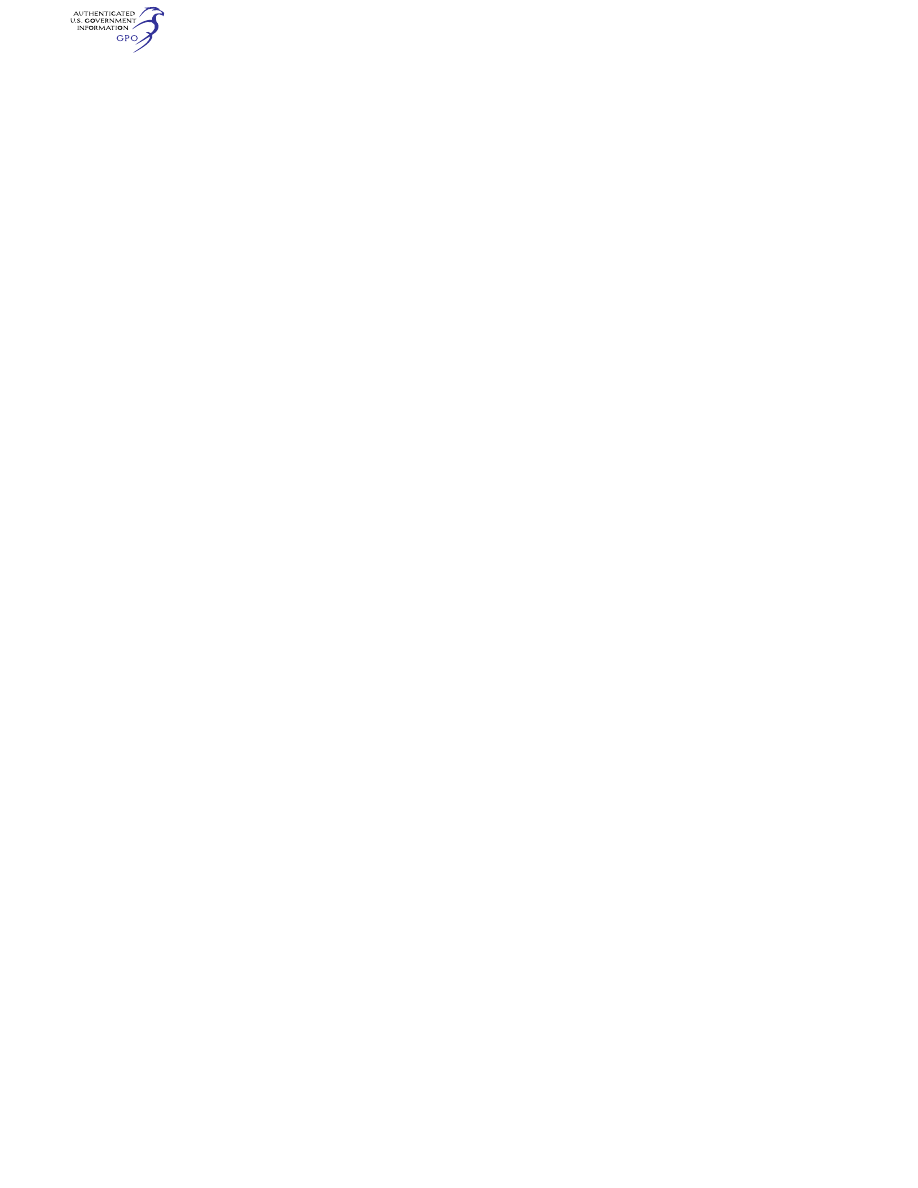
641
Federal Aviation Administration, DOT
§ 29.1023
to be suitable for the particular instal-
lation.
[Doc. No. 5084, 29 FR 16150, Dec. 3, 1964, as
amended by Amdt. 29–10, 39 FR 35462, Oct. 1,
1974]
§ 29.1015
Oil tank tests.
Each oil tank must be designed and
installed so that—
(a) It can withstand, without failure,
any vibration, inertia, and fluid loads
to which it may be subjected in oper-
ation; and
(b) It meets the requirements of
§ 29.965, except that instead of the pres-
sure specified in § 29.965(b)—
(1) For pressurized tanks used with a
turbine engine, the test pressure may
not be less than 5 p.s.i. plus the max-
imum operating pressure of the tank;
and
(2) For all other tanks, the test pres-
sure may not be less than 5 p.s.i.
[Doc. No. 5084, 29 FR 16150, Dec. 3, 1964, as
amended by Amdt. 29–10, 39 FR 35462, Oct. 1,
1974]
§ 29.1017
Oil lines and fittings.
(a) Each oil line must meet the re-
quirements of § 29.993.
(b) Breather lines must be arranged
so that—
(1) Condensed water vapor that might
freeze and obstruct the line cannot ac-
cumulate at any point;
(2) The breather discharge will not
constitute a fire hazard if foaming oc-
curs, or cause emitted oil to strike the
pilot’s windshield; and
(3) The breather does not discharge
into the engine air induction system.
§ 29.1019
Oil strainer or filter.
(a) Each turbine engine installation
must incorporate an oil strainer or fil-
ter through which all of the engine oil
flows and which meets the following re-
quirements:
(1) Each oil strainer or filter that has
a bypass must be constructed and in-
stalled so that oil will flow at the nor-
mal rate through the rest of the sys-
tem with the strainer or filter com-
pletely blocked.
(2) The oil strainer or filter must
have the capacity (with respect to op-
erating limitations established for the
engine) to ensure that engine oil sys-
tem functioning is not impaired when
the oil is contaminated to a degree
(with respect to particle size and den-
sity) that is greater than that estab-
lished for the engine under Part 33 of
this chapter.
(3) The oil strainer or filter, unless it
is installed at an oil tank outlet, must
incorporate a means to indicate con-
tamination before it reaches the capac-
ity established in accordance with
paragraph (a)(2) of this section.
(4) The bypass of a strainer or filter
must be constructed and installed so
that the release of collected contami-
nants is minimized by appropriate lo-
cation of the bypass to ensure that col-
lected contaminants are not in the by-
pass flow path.
(5) An oil strainer or filter that has
no bypass, except one that is installed
at an oil tank outlet, must have a
means to connect it to the warning
system required in § 29.1305(a)(19).
(b) Each oil strainer or filter in a
powerplant installation using recipro-
cating engines must be constructed and
installed so that oil will flow at the
normal rate through the rest of the
system with the strainer or filter ele-
ment completely blocked.
[Amdt. 29–10, 39 FR 35463, Oct. 1, 1974, as
amended by Amdt. 29–22, 49 FR 6850, Feb. 23,
1984; Amdt. 29–26, 53 FR 34218, Sept. 2, 1988;
Amdt. 29–59, 88 FR 8739, Feb. 10, 2023]
§ 29.1021
Oil system drains.
A drain (or drains) must be provided
to allow safe drainage of the oil sys-
tem. Each drain must—
(a) Be accessible; and
(b) Have manual or automatic means
for positive locking in the closed posi-
tion.
[Amdt. 29–22, 49 FR 6850, Feb. 23, 1984]
§ 29.1023
Oil radiators.
(a) Each oil radiator must be able to
withstand any vibration, inertia, and
oil pressure loads to which it would be
subjected in operation.
(b) Each oil radiator air duct must be
located, or equipped, so that, in case of
fire, and with the airflow as it would be
with and without the engine operating,
flames cannot directly strike the radi-
ator.
VerDate Sep<11>2014
09:06 Jun 28, 2024
Jkt 262046
PO 00000
Frm 00651
Fmt 8010
Sfmt 8010
Y:\SGML\262046.XXX
262046
jspears on DSK121TN23PROD with CFR